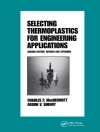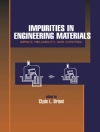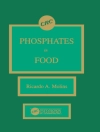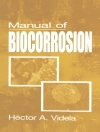This book describes the various techniques for nondestructive quality assessment of fruits and vegetables. It covers the methods, measurements, operation principles, procedures, data analysis, and applications for implementing these techniques.
The book presents the details of nondestructive approaches focusing on the present-day trends and existing future opportunities in the fresh food supply chain. First, it overviews different nondestructive techniques in food quality detection. Then it presents nondestructive methods: monochrome computer vision, imaging techniques, biospeckle laser technique, Fourier Transform Infrared (FTIR) Spectroscopy, hyperspectral imaging, Raman spectroscopy, near infrared (NIR) spectroscopy, X-ray computed tomography, ultrasound, acoustic emission, chemometrics, electronic nose and tongue. Selected applications of each method are also introduced. As a result, readers gain a better understanding of how to use nondestructive methods and technologiesto detect the quality of fresh fruits and vegetables.
With a wide range of interesting topics, the book will benefit readers including postharvest & food scientists/technologists, industry personnel and researchers involved in fresh produce quality detection. The book can also serve as a readily accessible reference material for postgraduate students.
Spis treści
1. Nondestructive Techniques for Fresh Produce Quality Analysis: An Overview.- 2. Monochrome Computer Vision for Detecting Quality Defects of Fruits and Vegetables.- 3. Imaging Techniques for Evaluation of Ripening and Maturity of Fruits and Vegetables.- 4. Application of Biospeckle Laser Technique for Assessment of Fruit Quality.- 5. Application of Spectroscopy for Assessing Quality and Safety of Fresh Horticultural Produce.- 6. Fourier Transform Infrared Spectroscopy (FTIR) Technique for Food Analysis and Authentication.- 7. Multi/Hyperspectral imaging for mango.- 8. Raman spectroscopy for fresh fruits and vegetables.- 9. NIR Spectroscopy for Internal and External Quality Measurement and Analysis of Thick Rind Fruits.- 10. Near-Infrared Spectroscopy for Pomegranate Quality Measurement and Prediction.- 11. X-ray Computed Tomography (CT) for the Internal Quality Evaluation of Fresh Produce.- 12. Non-Destructive Testing (NDT): Development of a Custom Designed Ultrasonic Systemfor Fruit Quality Evaluation.- 13. Acoustic Emission and Near-Infra Red Imaging Methods for Nondestructive Apple Quality Detection and their Classification.- 14. Chemometrics in nondestructive quality evaluation.- 15. Electronic Nose for Fresh Produce Quality.- 16. Use of Electronic Tongue to Determine Quality and Safety of Fresh Produce.
O autorze
Dr. Pankaj Pathare is an Assistant Professor of Postharvest Technology at Sultan Qaboos University, Oman. He has graduated with a B. Tech degree (Agricultural Engineering) from Dr. Panjabrao Deshmukh Krishi Vidyapeeth, Akola (India), and Ph D (Process & Chemical Engineering) from the University College Cork (Ireland). Before joining at SQU, he worked as researcher at Newcastle University, UK and Stellenbosch University, South Africa. He has gained expertise on postharvest technology & food engineering which includes quantification of Postharvest losses during transportation, Mechanical damage of perishables, Food agglomeration/granulation, Food drying and cooling and Structural design of corrugated packaging. The research results are well documented in 50 original scientific peer-reviewed journal papers. He also worked as supervisor/co-supervisor for ten postgraduate research students. He is a member of the editorial board of several research journals including PLo S ONE, Frontiers in Sustainable Food Systems, Open Agriculture, and Journal of Food Quality.
Prof. Shafiur Rahman is the author/co-author of over 450 technical articles including more than 160 journal papers and 15 books. He is the author of the internationally acclaimed and award-winning Food Properties Handbook, and editor of the popular Handbook of Food Preservation published by CRC Press, Florida. He has initiated the International Journal of Food Properties and serves as the founding Editor-in-Chief for more than 20 years. He serves on the editorial boards of 10 international journals and book series. He also serves as Editor-in-Chief for the Journal of Agricultural and Marine Sciences, published by Sultan Qaboos University. In 2008, Professor Rahman was ranked among the top five Leading Scientists and Engineers of 57 OIC Member Countries in the Agroscience Discipline. In 2020, he was recognized among World Top 2% influential scholars (ranked 107 among 48, 454 food scienceresearchers), published by Stanford University, USA.












